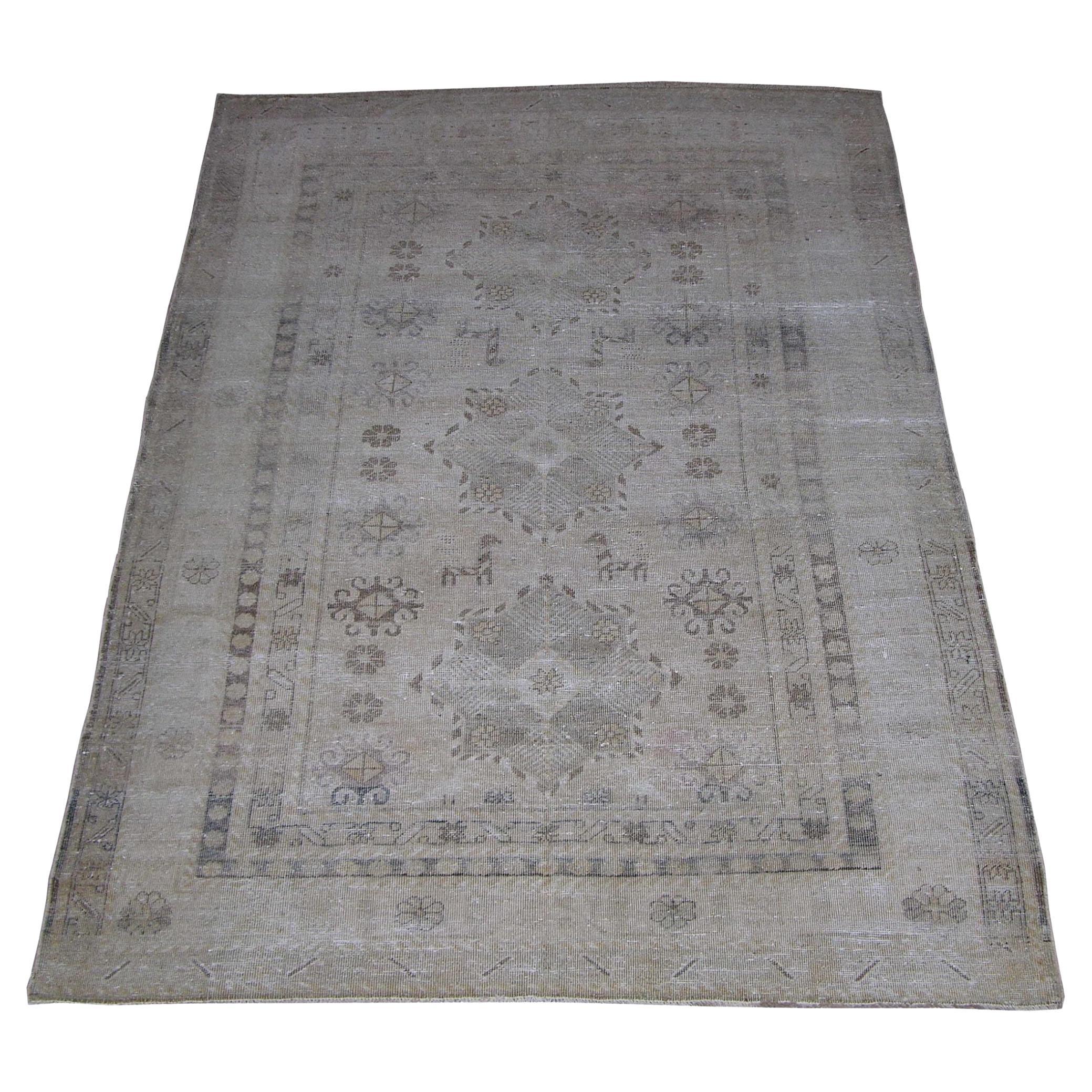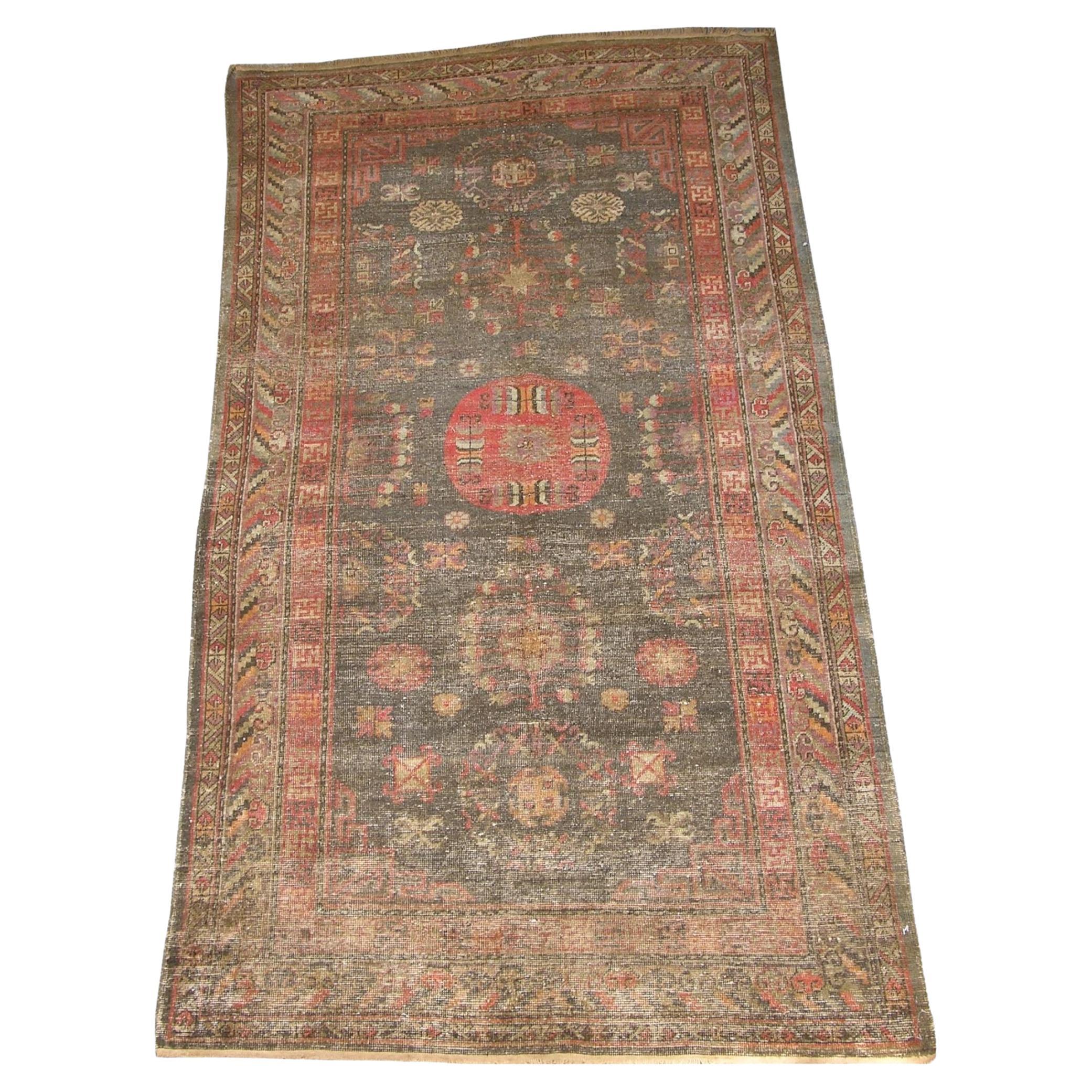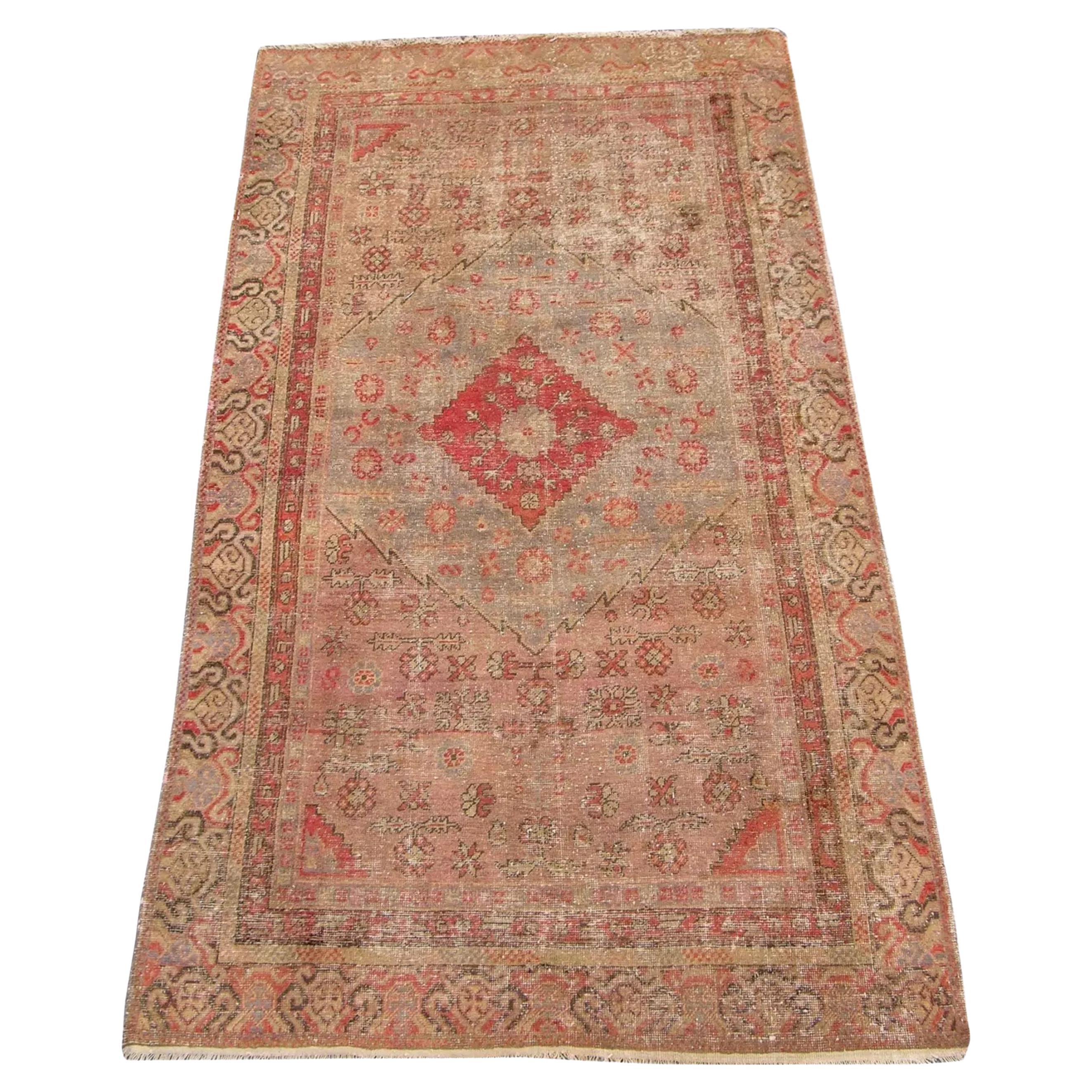Want more images or videos?
Request additional images or videos from the seller
1 of 5
19th Century Samarkand Rug
About the Item
Antique Samarkand Rugs: The desert oasis of Khotan was an important stop on the Silk Road. The people of Khotan were expert carpet weavers who produced high quality antique rugs and carpets for both internal and the commercial trade. Samarkand carpets and reached the height of their popularity between the 17th Century and 19th century although archaeological evidence shows local people produced intricately woven textiles more than 1,000 years earlier.During the height of Samarkand carpet production, the city of was part of a region designated as Chinese controlled East Turkestan. Today, the city of Khotan or Hotan is located in modern-day China in the region of Xinjiang or the New Frontier. Through the centuries, the Khotan has been controlled by many dynasties and imperial powers that have influenced local carpet design.
Geographically, Khotan is the southern-most of East Turkestan’s three distinct carpet producing regions, which also include Yarkand and Kashgar. The city of Khotan is located on the northern edge of the Tibetan Plateau in fertile valleys between two important glacial rivers the Karakash River and the Yurungkash River, which are known for their deposits of black jade and white jade respectively.Despite the natural land barriers of the snow-covered Kunlun Mountain range and the harsh Taklamakan desert, Khotan was an important stop on the Silk Road for thousands of years.
Antique Samarkand rugs have been influenced by invading superpowers, travelers, and traders passing through. The Huns were one of the first groups to control Khotan and East Turkestan before the Chinese Buddhists gained power in the year 200.In the 8th Century, the Uyghurs, a group of Turkic-speaking Muslims, became the controlling power over most of East Asia from the Caspian Sea in the west to the Manchurian coast in the east.
Trade routes linking Khotan and the Kashmir region of Northern India were essential for transporting dye goods to carpet weavers in Khotan. At the time, Kashmiri dyers held a strong monopoly over the brilliant dyes produced by madder and indigo. Yellow, brown, and many natural or earth-tone colors were produced with locally available dye plants.
In urban carpet and rug studios, master weavers were responsible for purchasing materials and overseeing a team of trained workers. Carpet houses ranged from single rooms in a family home to entire buildings. The majority of Khotan rugs were made from wool pile knotted around a cotton warp.
The weft was typically made from wool, but cotton was also used. For each row of knotted pile, weavers generally added two or three shoots of weft, a trait commonly seen in carpets from Kazak regions.
Khotan rugs were traditionally produced using the asymmetric Persian carpet knot, which gives the pile the directional quality associated with carpets from the Far East. Although elements from Chinese and Tibetan rugs are evident in the medallion designs of Khotan, the colors, detailed patterns, execution, and production methods make them unlike carpets produced in the Far East.Designs used in antique Samarkand rugs were borrowed from Turkey, Anatolia, Iran, India, and many other countries. Eastern designs like one, two and three-medallion motifs were used frequently in Khotan carpet designs.
Rugs featuring repeating gul motifs, all-over arabesques, and branching pomegranate and vase motifs were also popular. Many other motifs like diamonds, flowers, and curving oval elements were borrowed from Mughal carpet weavers to the south.
By the beginning of the 20th Century, weavers in East Turkestan and Khotan switched to synthetic dyes and many of their traditional carpet making techniques were lost. Despite the decline of the Khotan’s rug / carpet weaving industry, rugs produced in this ancient melting pot continue to be prized for their versatile styling and rarity.'
- Dimensions:Width: 58 in (147.32 cm)Length: 98 in (248.92 cm)
- Style:Other (In the Style Of)
- Materials and Techniques:
- Period:
- Date of Manufacture:1900
- Condition:good condition.
- Seller Location:Los Angeles, US
- Reference Number:
About the Seller
5.0
Gold Seller
These expertly vetted sellers are highly rated and consistently exceed customer expectations.
Established in 1920
1stDibs seller since 2023
30 sales on 1stDibs
Typical response time: <1 hour
- ShippingRetrieving quote...Ships From: Los Angeles, US
- Return PolicyA return for this item may be initiated within 3 days of delivery.
More From This SellerView All
- 19th Century Antique Samarkand RugLocated in Los Angeles, USThe desert oasis of Khotan was an important stop on the Silk Road. The people of Khotan were expert carpet weavers who produced high quality antique rugs and carpets for both interna...Category
Antique Early 1900s Other Russian and Scandinavian Rugs
MaterialsWool, Cotton
- 19th Century Uzbek Samarkand RugLocated in Los Angeles, USAntique Samarkand Rugs: The desert oasis of Khotan was an important stop on the Silk Road. The people of Khotan were expert carpet weavers who produced high quality antique rugs and ...Category
Antique 19th Century Other Russian and Scandinavian Rugs
MaterialsWool, Cotton
- 19th Century Vintage Samarkand RugLocated in Los Angeles, USAntique Samarkand Rugs: The desert oasis of Khotan was an important stop on the Silk Road. The people of Khotan were expert carpet weavers who produced high quality antique rugs and ...Category
Antique 19th Century Other Russian and Scandinavian Rugs
MaterialsWool, Cotton
- Antique 19th Century Samarkand RugLocated in Los Angeles, USAntique Samarkand Rugs: The desert oasis of Khotan was an important stop on the Silk Road. The people of Khotan were expert carpet weavers who produced high quality antique rugs and ...Category
Antique 19th Century Uzbek Other Russian and Scandinavian Rugs
MaterialsWool, Cotton
- Antique 19th Century Samarkand RugLocated in Los Angeles, USAntique Samarkand Rugs: The desert oasis of Khotan was an important stop on the Silk Road. The people of Khotan were expert carpet weavers who produced high quality antique rugs and ...Category
Antique 19th Century Uzbek Other Russian and Scandinavian Rugs
MaterialsWool, Cotton
- Antique 19th Century Samarkand RugLocated in Los Angeles, USAntique Samarkand Rugs: The desert oasis of Khotan was an important stop on the Silk Road. The people of Khotan were expert carpet weavers who produced high quality antique rugs and ...Category
Antique Early 1900s Other Russian and Scandinavian Rugs
MaterialsWool, Cotton
You May Also Like
- 19th Century Karabagh RugLocated in Chicago, ILA wonderful 19th century Russian Karabagh rug with a beautiful large-scale floral pattern on a black background, surrounded by multiple wonderful complementary floral borders.Category
Antique 19th Century Russian Bakshaish Russian and Scandinavian Rugs
MaterialsWool
- 19th Century Ukrainian RugLocated in New York, NY19th Century Ukrainian rug Size: 5'9" × 8'8" (175 × 264 cm) This is an exception example of floral Ukrainian rug dating back to the circa 1880. This woven rug has a vivid blue and br...Category
Antique Late 19th Century Ukrainian Caucasian Rugs
MaterialsWool
- Late 19th Century Ukrainian RugLocated in New York, NYUkraine, circa 1870 Handwoven Size: 8'6" x 5'10" (259 x 178 cm).Category
Antique Mid-19th Century Ukrainian Russian and Scandinavian Rugs
MaterialsWool
- Mid-19th Century Bessarabian RugLocated in New York, NYUSSR, circa 1830 Handwoven.Category
Antique Mid-19th Century Russian Bessarabian Russian and Scandinavian Rugs
MaterialsWool
- 19th Century Caucasian Kazak RugLocated in Savannah, GAThis handsome Kazak rug features a double large, bold, dominating geometric pattern with a smaller patterned within. The detailed borders and backdrop give it an edge that differenti...Category
Antique 1890s Caucasian Kazak Caucasian Rugs
MaterialsWool
- Tibetan Rug Takyab, 19th CenturyLocated in Ferrara, ITThis exceptional piece is an antique Tibetan Takyab, originally crafted as a decorative adornment and protective charm for pack animals, embodying the rich cultural heritage of Tibet...Category
Antique 19th Century Tibetan Tibetan Russian and Scandinavian Rugs
MaterialsWool





